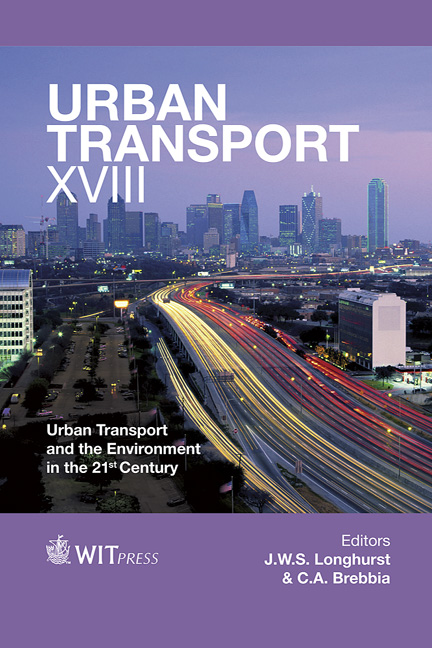The Need Of Improvement Of Transport Conditions In Large Romanian Cities
Price
Free (open access)
Transaction
Volume
128
Pages
9
Page Range
209 - 217
Published
2012
Size
1,130 kb
Paper DOI
10.2495/UT120191
Copyright
WIT Press
Author(s)
V. Rădulescu, I. Străinescu, L. Moroianu, C. Goia, E. Tudor, F. Bozaş, V. Lupu, B. Rădulescu & M. Tănase
Abstract
The development of the large cities in Romania, especially of the capital, Bucharest, and the exaggerated increase of the number of cars, mostly used cars from Western Europe with a long mileage, has contributed to the pollution of these cities and resulted in a horrific urban traffic, particularly during the morning and the evening rush hours. To provide this kind of transportation in Bucharest and the surrounding areas, RATB uses 300 km of tram lines with a park of 500 tram wagons, 18 trolley lines with a 485 km network and a park of 300 trolleys, the bus transport system with a 2900 km network and a park of 1300 buses, 3 Light Rail (LR) lines and 4 subway lines.. This paper will examine the decision factors and the planning concerns to provide better conditions for urban transport in Bucharest and in the other large cities in Romania, especially with urban electrical vehicles. Although the fleet of urban transport vehicles is based on electrical vehicles, because of the traffic jams during the rush hour, the satisfaction of the passengers is low (except for the light-rail and metro passengers). A lot of car owners are using car transport (even single occupancy) to the work place and shopping areas, resulting in terrible traffic. This is the reason why the light-rail transportation was developed in Bucharest and in major cities in Romania, as presented before. In order to encourage the use of the urban transportation means (especially the electrical ones), we have proposed some measures to improve the comfort provided by urban public transport vehicles. The company ICPE SAERP Bucharest, that specializes in the production of electrical traction drives and auxiliary converters, is developing and continuously improving the equipment
Keywords
modern transit, trams, trolleybuses, light metro, subway lines, capacity, travel time, light rail





